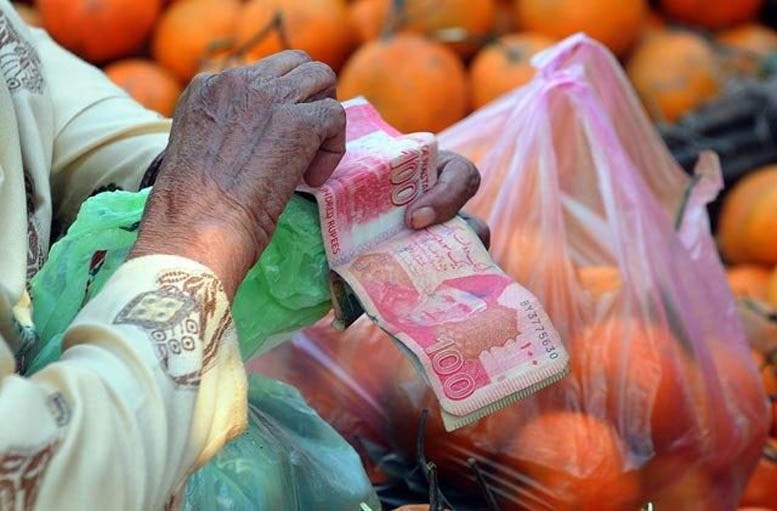
The rising inflation is likely to not affect microfinance loan recipients directly but it could slowdown their businesses

With rising inflation, it is feared that the economic crunch will affect everyone, particularly the poor. Increased interest rates and high taxes can deter buyers, undermining their capacity to purchase, particularly in the middle and lower-middle income classes, which constitutes the dominant majority.
However, experts in microfinance credit say this will not directly impact their clientage but it could slowdown small businesses.
Core consumer prices in Pakistan have increased by 7.20 percent in June 2019 compared to the same month last year, according to Trading Economics, an international organisation providing data on economic indicators for 196 countries. It also claims that the Core Inflation Rate in Pakistan averaged 7.50 percent from 2010 until 2019, reaching an all-time high of 11.40 percent in June of 2012 and a record low of 3.40 percent in September of 2015.
Last week, Reza Baqir, the State Bank of Pakistan governor, revised the inflation projection for the current fiscal year to vary from 11 percent to 12 percent. He had projected a higher inflation in the first half of the current fiscal year.
"The effect on microfinance clients cannot be feared amid increasing inflation because they mostly pass it on to their customers," says Ali Basharat, head of operations of the Pakistan Microfinance Network (PMN). The network is a 20-year-old association of microfinance organisations and banks. "The chances of any negative impact are less according to previous studies. But recent discussions with some clients indicate fear regarding slowdown in businesses due to this price hike."
He says PMN’s earlier surveys had found that if the inflation rates persist or increase, some rethinking on behalf of microfinance providers may be necessary. Basharat says they may have to raise their credit ceilings keeping in mind the real value of the loan, and may even be required to increase the loan installment process by some months to ease likely pressures on clients. "This can be the case in the current situation too," he adds.
A PMN’s report on the first quarter of 2019 states growth in majority key indicators with microcredit penetration standing at 34.7 percent and total clients crossing 7 million. Active borrowers increased by 2.6 percent to reach 7.1 million total borrowers while the Gross Loan Portfolio (GLP) witnessed a 5 percent increase crossing Rs 288 billion. The total market share among the peer groups remained unchanged with Microfinance Banks (MFBs) holding 48 percent and Non-Bank Microfinance Companies (NBMFCs) holding 52 percent of the total market. The government microfinance loan providers are other than this, but that is only Pakistan Poverty Alleviation Fund (PPAF), which now falls under the jurisdiction of the new ministry of social protection.
At the moment, there are 45 non-government microfinance providers, including 11 microfinance banks, providing nearly Rs 288 billion to clients each year. A majority of these clients are women - nearly 55 percent.
Some microfinance clients TNS spoke to did not fear a negative impact on small businesses due to increasing inflation.
Thirty two-year-old Asad Iftikhar runs a merchandise shop in a small but busy street in Satellite Town, Rawalpindi. He received Rs 150,000 through a non-government microfinance loan provider and went on to try his luck at setting up his own business.
"The clientage these days is slow. But I am still earning and trying to pay back my loan on time," he says. "Inflation is a reality. It is also affecting the purchasing power of small buyers." He believes that inflation will affect his business.
Also read: Editorial
Despite this, there are many young people in his locality who are considering starting small businesses with microfinance credit their only alternative to unemployment.
Outside a busy cloth market in Rawalpindi, Arsalan Ahmed runs a stall, selling potato fries. Ahmed is satisfied with his business. "I am happy with my small business because it is a specialised counter, and I get customers daily," he says. "With microfinance loans it is not about inflation but the idea of the business," adds Ahmed.
A previous study of the PMN, conducted in 2008, at a time of high inflation amid serious economic constraints, had concluded that most clients had been able to deal with inflation. It also stated that many, particularly those producing food crops and agricultural commodities, had actually profited from it. The study also indicated that loans had, in fact, helped clients, largely because they had been able to buy cheap, or in bulk, and were able to sell at increased prices - once the market recovered.